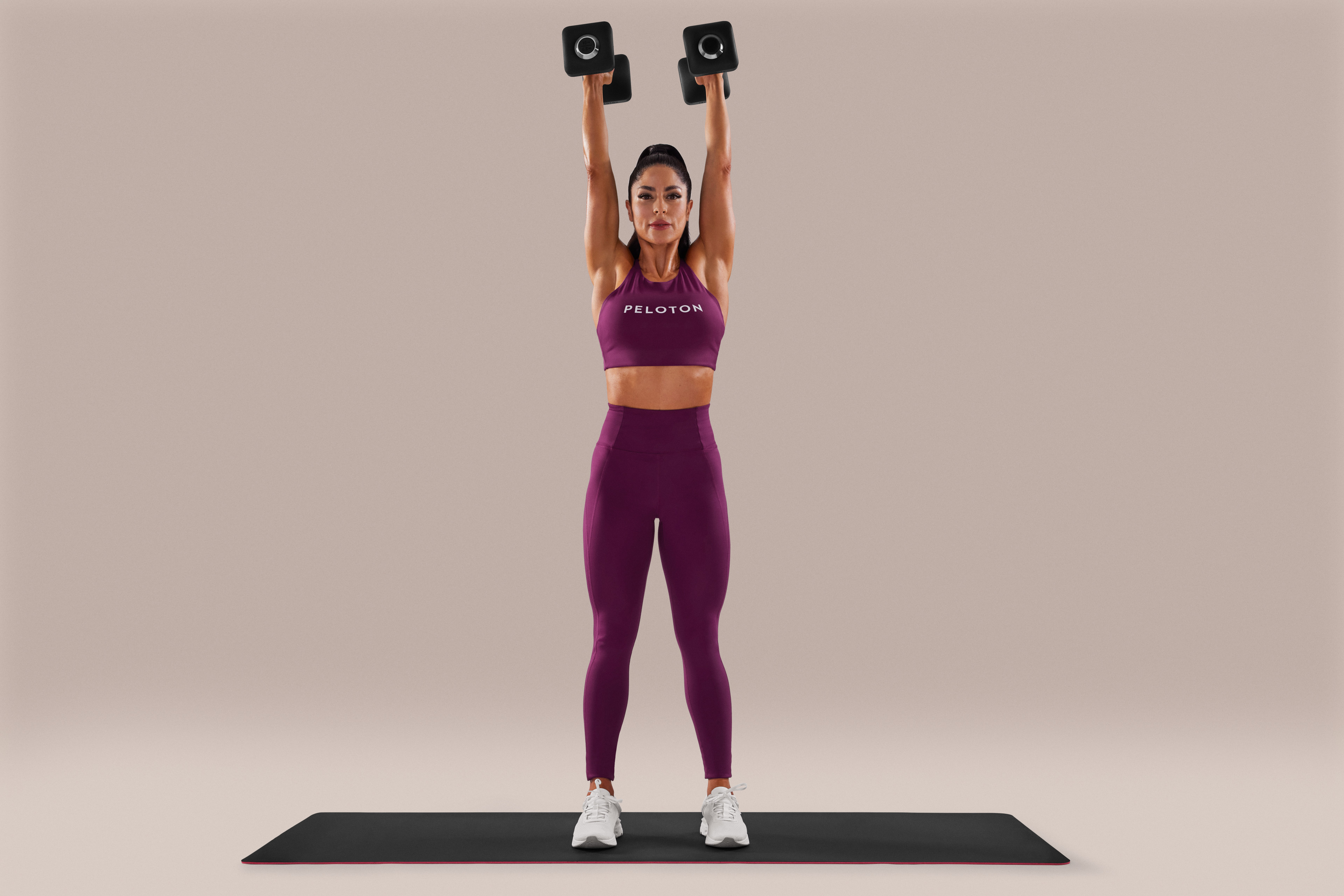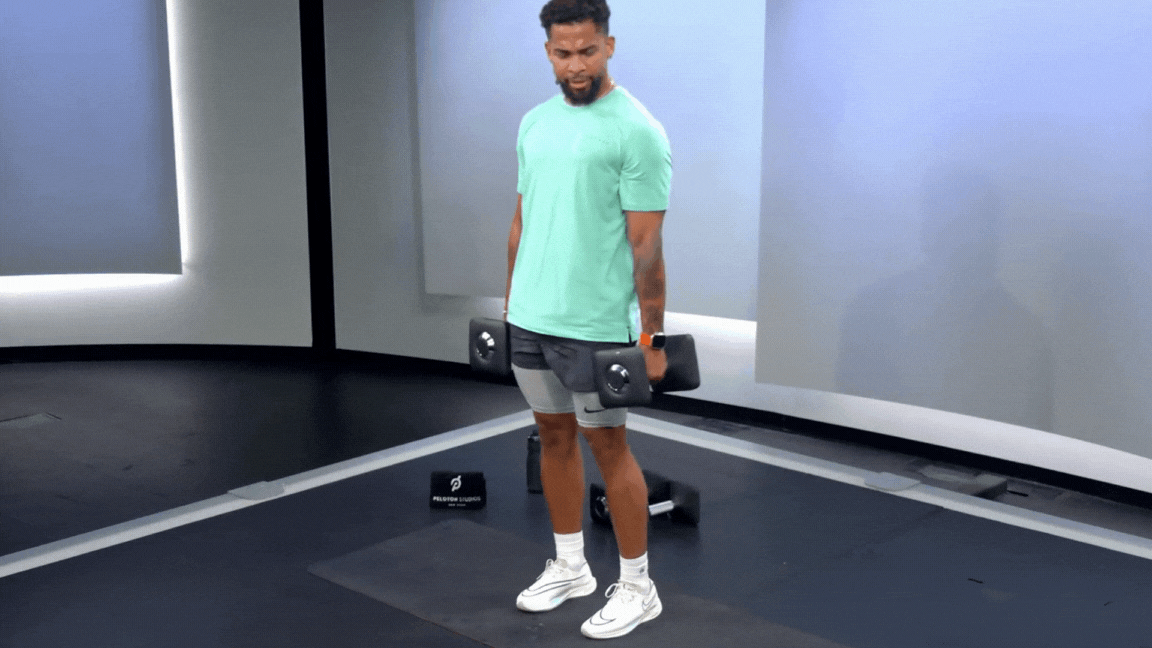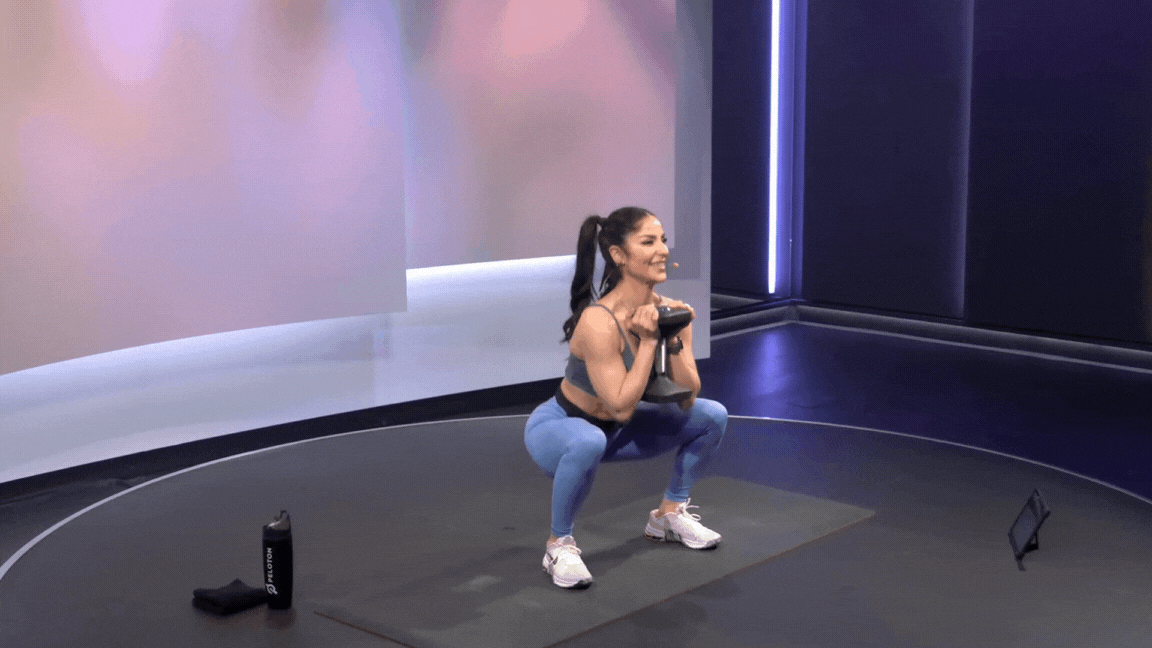
New to Lifting Weights? Try These 10 Beginner-Friendly Dumbbell Moves
These upper and lower body dumbbell exercises are great for beginners, but anyone can reap the benefits of these strength training moves.
By Alyssa Sparacino•
The Benefits of Dumbbell Workouts
What Weights Should Beginners Use?
Top Tips for Perfect Form
Upper Body Beginner Dumbbell Exercises
Lower Body Beginner Dumbbell Exercises
How Long Should Your Dumbbell Workout Be?
When it comes to fitness equipment, there’s nothing more classic and multi-functional than the dumbbell. They’re versatile, easy to access, and come in nearly any weight range. If you’re newer to strength training, dumbbell exercises are a fantastic way to get stronger before jumping into other, more advanced tools such as a kettlebell or barbell. Bonus: A set of dumbbells easily fits under your bed or sofa, so you can train any time that works for you.
The Benefits of Dumbbell Workouts
Dumbbells are one of the most accessible pieces of workout equipment—whether you have a few go-to sets at home or gravitate toward the free-weight section of the gym. Exercisers of all ages and levels can use them for endless types of exercises—upper body, lower body, full body, warm-ups, active recovery, and so much more. That said, dumbbells are a particularly great tool for beginners, because they help improve stability and balance, says Peloton instructor Assal Arian. “Dumbbells require you to engage your muscles more fully to maintain proper form, which enhances your balance and stability over time,” says Assal. “You can’t trick the dumbbells.”
Dumbbell workouts, such as the strength training classes on the Peloton App, also expertly target all muscle groups. “When you use dumbbells, you're not just working the primary muscles involved in a movement, but also the smaller stabilizer muscles which results in a more efficient workout,” she says.

Peloton App
Access thousands of classes with no equipment needed.
Lastly, dumbbell exercises “offer endless variations and limitless movement possibilities,” says Assal. “This means you can continuously challenge your muscles and mind in new ways, preventing workout monotony and seeing consistent progress.”
What Weights Should Beginners Use?
As soon as you press start on a Peloton Strength Class, your instructor will call out what equipment you’ll need for class, but if you’re new to strength training, knowing exactly what weights to grab can be confusing.
First, know that what you consider “light,” “medium,” and “heavy” weights will be different from others. Plus, your version of a medium-weight for a dumbbell curl is likely going to be different from your perspective of a medium-weight shoulder press, for example, as exercise loads and muscle stamina will vary. “Always start lower rather than too heavy since smaller muscles fatigue quicker than bigger ones,” says Assal.
As a starting point, try these weight ranges and then adjust accordingly, says Assal. “A good rule for newbies: If you struggle to complete the reps, lower the weight,” she says.
Light: 3-5 lbs
Medium: 5-15 lbs
Heavy: 15+ lbs
Top Tips for Perfect Form
“Focus on proper form, gradually increase your weights, and give yourself time to recover,” says Assal of how to get the most out of your beginner-friendly dumbbell workouts. “Your muscles should feel challenged by the last few reps, but you should still complete the full range of motion without compromising good form.
Other dumbbell exercise mistakes you want to avoid are:
Skipping warm-ups: A proper warm-up can be bodyweight or use light weights to activate the muscles you’re about to train.
Taking shortcuts: Use your workout time wisely, but don’t cut corners. That means, you should be going through the full range of motion (no partial reps) with each movement, taking rest when it’s cued or as needed, and taking the time to adjust for your weight selections between exercises, if needed.
Not progressing in weight: As you begin to adhere to your training schedule and become stronger, you’ll need to make some adjustments to the weights you use. What used to be medium may feel light—don’t be afraid to pick up heavier weights as that’s the key to progression.
Upper Body Beginner Dumbbell Exercises
Beginners can keep the weight selection light and focus on slow, controlled movements to maintain good form and really feel the burn in these upper body dumbbell exercises, says Assal.

Bicep Curl
Stand with your feet hip-width apart, holding a dumbbell in each hand, palms facing forward.
Curl the weight to your chest, keeping your elbows at your sides.
Pause, then lower the dumbbells to return to the starting position.
Muscles worked: Biceps (some triceps at the bottom of the position)
Front and Lateral Raise

To perform a front raise:
Stand with your feet hip-width apart, holding a dumbbell in each hand, palms facing behind you.
Exhale as you brace your core and lift both arms straight up to shoulder height, before slowly returning to starting position.

To perform a lateral raise:
Stand with your feet hip-width apart, holding a dumbbell in each hand, palms facing in toward your body.
Exhale as you brace your core and lift both arms straight out to the sides to shoulder height, before slowly returning to starting position.
Muscles worked: Anterior and lateral delts, core, pecs

Overhead Press
Begin standing, holding a dumbbell in each hand, racked up onto your shoulder with palms facing in toward your head.
Exhale as you brace your core to avoid arching your lower back as you press both arms up overhead making sure to fully extend your arms.
Muscles worked: Pecs, delts, traps, triceps

Triceps Kickback
Begin standing with a dumbbell in each hand, arms down by your sides, and palms facing inward toward your body.
Hinge at the hips, bringing your butt back while maintaining a flat back. Row the weights to bring your bent elbows backward. Tuck your arms in close to your midline. This is your starting position.
Extend both arms out long to “kick” the weights back. Be mindful not to overextend your elbow joint.
Engage your triceps at the top before returning to the starting position.
Muscles worked: Triceps

Reverse Fly
Start standing with your feet hip-width apart with a dumbbell in each hand, palms facing inward toward your body.
Hinge at the hips while maintaining a flat back, so your torso is at a 45-degree angle to the floor.
Bring your arms toward each other in front of your body as if hugging a beach ball. This is your starting position.
Shoulder blades should be down and back; careful not to shrug your shoulders.
Pull your shoulder blades together to bring your arms out wide into a curved T-shape (elbows can be slightly bent).
Slowly lower your arms back in front of you to your starting position.
Muscles worked: Deltoids, rhomboids, lats, traps
Lower Body Beginner Dumbbell Exercises
Newbies will love these classic lower body dumbbell exercises that train the legs and glutes.
Split Squat
Begin standing, holding a dumbbell in each hand with arms down at your sides.
Take a large step back with your right leg. Make sure feet are hips-width apart to maintain balance and control.
Bend both legs until they form 90-degree angles.
Press through your front heel to return to the starting position.
Muscles worked: Quads, hamstrings, calves, glutes

Begin standing holding a dumbbell in each hand with arms in front of your thighs.
Hinge at your hips, as you keep your chest lifted. You’ll have a slight bend in your knees, and your back should be straight.
Lower the weights toward your shins. Pause when the weights reach midway or just past there; you should feel your hamstrings catch.
Press through your heels and reverse your hinge as you return to standing.
Squeeze your glutes at the top, and avoid arching your back.
Muscles worked: Glutes, hamstrings, calves, back
Hip Thrust
Begin lying on your back with bent knees and feet flat on the floor. Hold a dumbbell in each hand resting on your hips toward the top of your thigh; avoid lying weights directly on your hip bones.
Squeeze your glutes and engage your core as you press through your heels to lift your hips up into a straight diagonal line from your shoulders to your knees.
Pause at the top before lowering back down to the starting position.
Muscles worked: Glutes, hamstrings, back

Begin standing with your feet hip-width (or wider) apart. Toes can be turned slightly out. Hold one dumbbell with both hands in front of your chest.
Engage your core and keep your chest lifted, as you bend both knees to come into a squat position until thighs are roughly parallel to the floor.
Press your heels to return to standing.
Muscles worked: Quads, hamstrings, glutes, calves, and core
How Long Should Your Dumbbell Workout Be?
A beginner dumbbell workout length can vary, but aiming for a 10-30 minute session is sufficient to start. You can try stacking 10-minute dumbbell workouts (upper body, lower body, full body) for a comprehensive 30-minute session, or just add an Extra 10-style class to the end of another workout, for example. Just remember, the longer you train, the more time you’ll need to recover.
When you’re just starting out, try to fit three dumbbell workouts into your training schedule each week, suggest Assal. This will help you build and maintain strength over time. When you’re ready (or if your schedule allows), you can bump that up to five sessions a week. “Just make sure to recover after each session,” she says. You can try a Peloton 3- or 5-day Strength Split program to get a sense of what a week’s worth of dumbbell workouts feels like. If you’re creating your own dumbbell exercise training plan, try one lower body, one upper body, and one full body workout each week.

Peloton App
Access thousands of classes with no equipment needed.
This content is for informational and educational purposes only and does not constitute individualized advice. It is not intended to replace professional medical evaluation, diagnosis, or treatment. Seek the advice of your physician for questions you may have regarding your health or a medical condition. If you are having a medical emergency, call your physician or 911 immediately.
Level up your inbox.
Subscribe for a weekly dose of fitness, plus the latest promos, launches, and events.
By providing your email address, you agree to receive marketing communications from Peloton.
For more about how we use your information, see our Privacy Policy.









